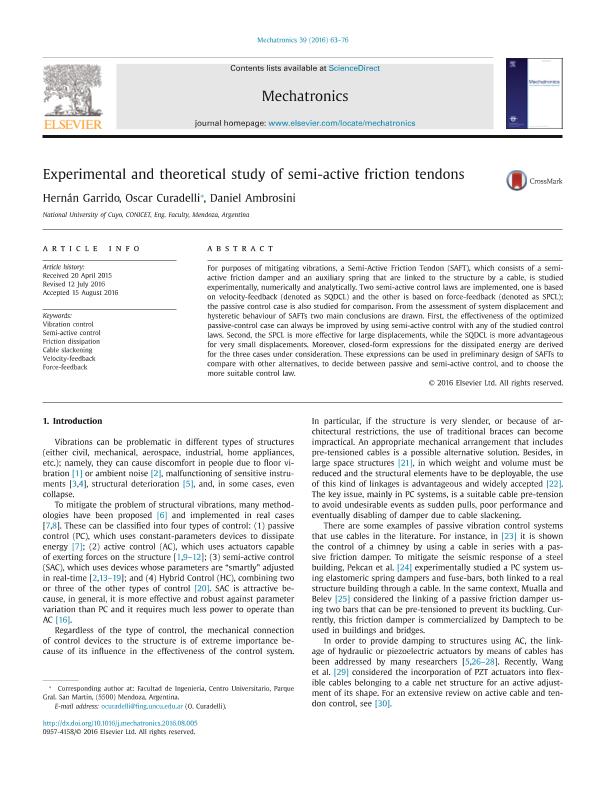Artículo
Experimental and theoretical study of semi-active friction tendons
Fecha de publicación:
08/2016
Editorial:
Pergamon-Elsevier Science Ltd
Revista:
Mechatronics
ISSN:
0957-4158
Idioma:
Inglés
Tipo de recurso:
Artículo publicado
Clasificación temática:
Resumen
For purposes of mitigating vibrations, a Semi-Active Friction Tendon (SAFT), which consists of a semi-active friction damper and an auxiliary spring that are linked to the structure by a cable, is studied experimentally, numerically and analytically. Two semi-active control laws are implemented, one is based on velocity-feedback (denoted as SQDCL) and the other is based on force-feedback (denoted as SPCL); the passive control case is also studied for comparison. From the assessment of system displacement and hysteretic behaviour of SAFTs two main conclusions are drawn. First, the effectiveness of the optimized passive-control case can always be improved by using semi-active control with any of the studied control laws. Second, the SPCL is more effective for large displacements, while the SQDCL is more advantageous for very small displacements. Moreover, closed-form expressions for the dissipated energy are derived for the three cases under consideration. These expressions can be used in preliminary design of SAFTs to compare with other alternatives, to decide between passive and semi-active control, and to choose the more suitable control law.
Archivos asociados
Licencia
Identificadores
Colecciones
Articulos(CCT - MENDOZA)
Articulos de CTRO.CIENTIFICO TECNOL.CONICET - MENDOZA
Articulos de CTRO.CIENTIFICO TECNOL.CONICET - MENDOZA
Citación
Garrido, Carlos Hernán; Curadelli, Raul Oscar; Ambrosini, Ricardo Daniel; Experimental and theoretical study of semi-active friction tendons; Pergamon-Elsevier Science Ltd; Mechatronics; 39; 8-2016; 63-76
Compartir
Altmétricas




